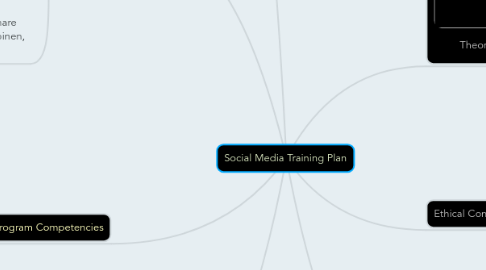
1. Motivation
1.1. Social mediate motivates students by giving them on-demand access to tools and materials in a less-structured or more informal setting, which helps learners maintain their motivation to learn about a topic (Premenko, 2012).
1.2. Students may not be motivated to engage, rather they may become passive participants or “lurkers” (Leino, Tanhua-Piiroinen, & Sommers-Piiroinen, 2012) if not required to engage or if the amount of work is not deemed to be assessed by the instructor.
1.3. Adding social media to training provides a level of anonymity and privacy relative to the learner’s workplace that motivates those who are shy or otherwise hesitant to share to engage and share their own experiences and interact with others (Leino, Tanhua-Piiroinen, & Sommers-Piiroinen, 2012)
2. Training Program Competencies
2.1. Effective Communication
2.1.1. Learners and trainers should have strong verbal and written communication skills.
2.1.2. They should be able to navigate a communication thread in a social media environment with ease and understand how tone and visual cues can affect those receiving their communications
2.2. Thorough Research and Use of Resources
2.2.1. Learners and trainers should be able to navigate their social media resources and should be able to conduct thorough research on the assigned topics.
2.2.2. Research is done with care, using valid sources and references
2.3. Engaged Interactions
2.3.1. Learners and trainers should be engaged when interacting with others in the social media environment. Those who do not will not be considered competent in this area.
2.3.2. It is inappropriate to only receive information and avoid sharing information with others.
3. Organization
3.1. Untangled Soul Mindful Instruction is working with a major bank (name undisclosed due to non-disclosure agreement) to train its employees in the benefits of mindfulness and mindfulness exercises and techniques.
3.1.1. Untitled
